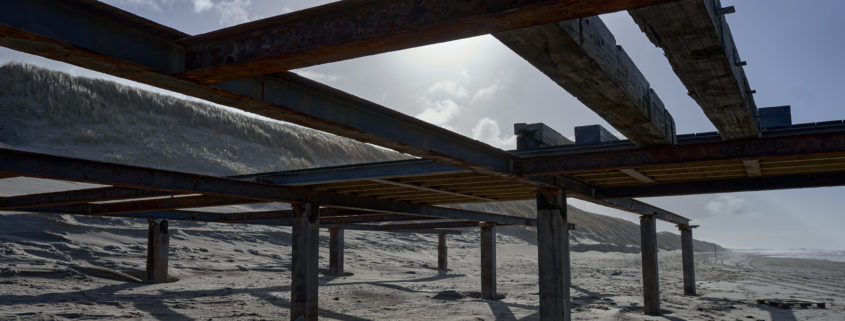Move Referenced Catalog Images
To move referenced catalog images is not an everyday task and requires careful planning. In this post I discuss two scenarios, moving the catalog and moving the images. Get detailed instructions here for a bullet proof process with a maximum result, so that you are up and running in now time and without sweat!
Move Referenced Catalog Images
You have a Catalog with thousands of images stored on an internal or external drive. One day you want to move your Catalog to another computer or your images to another drive. Not your favorite business.
How do you accomplish this task without a headache and more importantly, with the desired result? In this blog, I take you through two different scenarios.
Your situation may differ but most likely you will find help in either or both scenarios:
- Scenario 1 – Move the Catalog
I move my Catalog to another folder or computer. The images on my external drive do not change. - Scenario 2 – Move the Images
I move my images to another location, the Catalog stays in the same location.
Inside Or Outside
Before we continue, we have to make sure you get a few basic concepts about images and Catalogs. You can store images either inside or outside the Catalog, or both. You can distinguish between the two easily from the Library tool > Folders section.
In the screenshot on the left, all images are in the In Catalog object. This means that all images are stored inside the Catalog. When you move the Catalog all images move with it. There is no additional action to take care of.
The backside of this type of storage is that you easily grow out of disk space if you have your Catalog on your internal disk. In addition, it lacks the flexibility of external storage. Instructions on how to move images out of your Catalog, see my post Move Managed Catalog Images.
In the screenshot on the right, you see below the In Catalog object the name of a drive with a part of a folder tree. This means that all images are stored outside the Catalog.
The drive has a green indicator meaning it is online. Not surprisingly, as it is my internal drive. The images I imported in the Catalog are somewhere in folders on that drive.
The Catalog contains a link to the image location. Moving the Catalog or the images can break the link. The images become offline (see below). You can update the link in the Catalog, a process that is called Locate or Relocate.
Note: images stored inside the Catalog will never have the offline status unless there is something seriously wrong with your Catalog database.
Understanding Offline Status
An image is offline when Capture One can not establish a connection to it according to its destination in its database. An example is a disconnected external drive. You solve the offline status by connecting the drive to the computer.
This is typical for laptops on the road that have the Catalog on the internal drive and the images on an external drive at home. You can still browse and edit the images while they are offline.
See the red indicator behind the drive in the screenshot above. The preview of each image in these offline folders has the Offline indicator, as in the screenshot below.
If the Offline Status is the result of a moved Catalog or images to a different location, the link in the Catalog is broken. Relocate the images again to fix the link. I will discuss this in detail below.
Note that you do not have to be frightened by the offline status. Just understand its cause and take appropriate measures. In this post, I discuss how we bring images online again in the most efficient way.
Prepare
The actions I discuss here include a huge amount of changes to the Catalog database. Prepare yourself properly by first making a database backup via File menu > Backup Catalog before you start. Next, run the verification process via File menu > Verify Catalog or Session.
In case that the verification process repaired any inconsistencies, make another database backup via File menu > Backup Catalog. Note that the Backup Catalog command from within Capture One only contains the Catalog database and additional files like Layer Masks and ICC profiles where applicable. There are no images in that backup.
Scenario 1 – Move The Catalog
Start with identifying your Catalog. Where is it now? Many users totally rely on the Recent list in Capture One that they have forgotten where their Catalog actually resides.
On macOS, it is a single entity like a file but actually it is a folder with subfolders and files. If you have enabled the Show all filename extensions in the Finder preferences, you will see the .cocatalog extension behind the Catalog name.
On Windows, you always see the folder structure with subfolders in File Explorer. Inside the Catalog folder, you find the database file with the .cocatalogdb extension.
How To Move
You can move your Catalog to another folder, to another disk or other computer. My preferred method is to copy the Catalog first. When this is successful, I delete the old Catalog when everything works as it should in the new situation. A copy-and-delete process is easier to control than the move process.
I also prefer not to use drag-and-drop for this kind of operation. First, drag-and-drop may move instead of copy your Catalog. There is a logic behind that choice but not everybody is familiar with that, let alone how to overwrite the default action.
Second, you have the risk of dropping the item into the wrong location. Again, manually copying the Catalog gives you all the control.
This is what I prefer. You may differ, so please do what you like most and feel confident with.
Locate Or Not
As explained earlier, the Catalog database contains all references to your images. Those references to images stored outside the Catalog are still valid when you moved that Catalog to a new location on the same computer. This applies both to images on the local disk as well as on external disks.
In case you moved the Catalog to another computer, you need to move images on your internal drive as well, as they are no longer accessible for the Catalog. External volumes may connect successfully or not. They do not necessarily have the same file path on the new computer as in the old situation.
If this is the case, images will end up as Offline as mentioned earlier. To relocate offline images, please see Scenario 2 – Move The Images below.
Scenario 2 – Move The Images
This is obviously a more exciting or demanding scenario and also the one that more users are confronted with.
You may want to move your images from the internal drive to external or vice versa. Maybe you want to reorganize your images on the same drive or move them from one external drive to another external drive, like from a USB drive to a NAS or Network-Attached Storage.
The procedure for all these different scenarios is the same.
Parent Folder
Let’s assume I like to move my images from a filled up USB drive to NAS with more storage. I copy the entire folder structure with its parent folder to the new drive. The structure is something like this:
In this example, the Images folder is the parent folder. I copy that folder to the new drive. Note that I copy the images to the new location, not move. After copying I leave the original location intact until the entire process is finished.
After copying, I open my Catalog in Capture One. Nothing has happened yet as the images are still in their original location where Capture One looks for them.
Next, in the Library tool > Folders section, I select the parent folder. If necessary, expand the folder structure. I right-click on that folder and select Locate. The file and folder dialog opens.
In the file and folder dialog, browse to the new location. This is the same parent folder but now in the new location, say the larger drive. Select that folder and click the Open button. Capture One now updates the database for all folders and images below that parent folder.
Notice that the Library > Folders section is immediately updated, removing the old location and adding the new one.
To round up your move, backup your database and verify its consistency. If any error was found and corrected during verification, back up again. Last, remove the images from the old location in Finder or File Explorer.
Rollback Scenario
With my ICT-background, I now that when I change the configuration of a system, I must be able to get back. This is also known as my rollback scenario.
You probably noticed that I did not move the images entirely from within Capture One. That would have been possible but I do not prefer this scenario for several reasons.
When moving images entirely from within Capture One, the program performs multiple tasks simultaneously. When something goes wrong, you have no or very few means to stop it in a controlled way, diagnose the issue, assess the damage and repair it accordingly. It is an all or nothing, big-bang kind of scenario. There is no rollback other than restoring a full backup, which can be quiet time-consuming.
By splitting the process up in separate steps, and perform the steps with the tools that are made for each task, you can evaluate the result of each step before proceeding to the next. In case you are not satisfied with the result of a step, retry the step or fix what was broken before you continue.
Thank you
for reading. Please feel free to leave a comment. Like us on Facebook or subscribe to stay informed about new blogs.
Want to try Capture One? Or would you like to buy it?
Best Regards,
Image Alchemist















You state that moving the catalog or the images will break the link. Moving the catalog does NOT break the link. Only moving the images break the link for referenced catalogs.
Hi Walter,
Thank you for your comment. I changed the text to prevent confusion. Note that if moving a catalog leads to offline status, I assume the link is broken and needs re-location.
Best, Paul Steunebrink / Image Alchemist
Moving the catalog does break the link when you move between Mac and Win computers. After relinking the correct path it works fine again so it is a small hassle.
Thanks Paul for all the clues…
I did import my catalog from laptop (MacBook Air) to desktop (iMac), but doing a ‘synchronize’ instead of ‘locate’ after copying the images to the folders in the target folders.
Not all adjustments are imported, like Lens correction, Base characteristics, Layers… neither keywords, rating, labels…
Is there any way to import and keep all adjustments from source to target computers…?
I use the laptop while traveling, so it is important to keep all the editing when going back to my main workstation at home.
Great website, thanks for sharing your work…
Hi Ramón,
There are various answers to your question. But in your workflow, you’d better use ‘locate’ instead of ‘synchronize’. The synchronization process has a different purpose. Also, copy both the catalog and images to the destination computer first, before importing it into another catalog. I do not recommend importing over a network.
Importing one catalog into the other might work, but you have to take care of the referenced images. Another workflow often used is to use sessions on the laptop and move and import these later to the catalog.
There is not a simple one-fits-all solution, I am afraid.
Best, Paul Steunebrink / Image Alchemist
Thanks Paul. It’s quite complicated, confusing and disappointing, to be honest. As editing software CO is unbeatable, I believe, but there’s a lot of room to improve in this area, I am afraid, to make it simpler and more user friendly.
In the meantime, I will try using Sessions in my laptop, and see if I am able to control this…
Thanks again for your time, best,
Ramón
HI Great article.
I am trying to copy all my images and catalog from one external drive to another larger drive. The catalog has 60,000 images with many of the files with adjustments. I’m using capture pro 21 on a win 10 computer. I copied the entire old drive onto the new drive with robocopy. when i open the catalog on the new drive the root folder showed up in the library but none of the subfolders. I tried importing one of the subfolders from the new drive but none of the adjustments show up even though i clicked import with adjustments. The catalog is all referenced files except 1300 files in the catalog. There are about 300 folders (under the root folder) some with several subfolders . Many of the folders are just images but some are sessions.
Any idea what i can do now to use the catalog on the new drive
Hi Ron,
First, do not import. Please do not. Don’t. The images are referenced in your catalog and importing will create a mess of duplicates. Adjustments are in the catalog, not with the images.
What you did not mention, is whether you relocated the images in your catalog. They now have a different location but the catalog is not aware of it. My post outlines the procedure. Contact me directly by mail or contact page if you have any questions.
Best, Paul Steunebrink / Image Alchemist